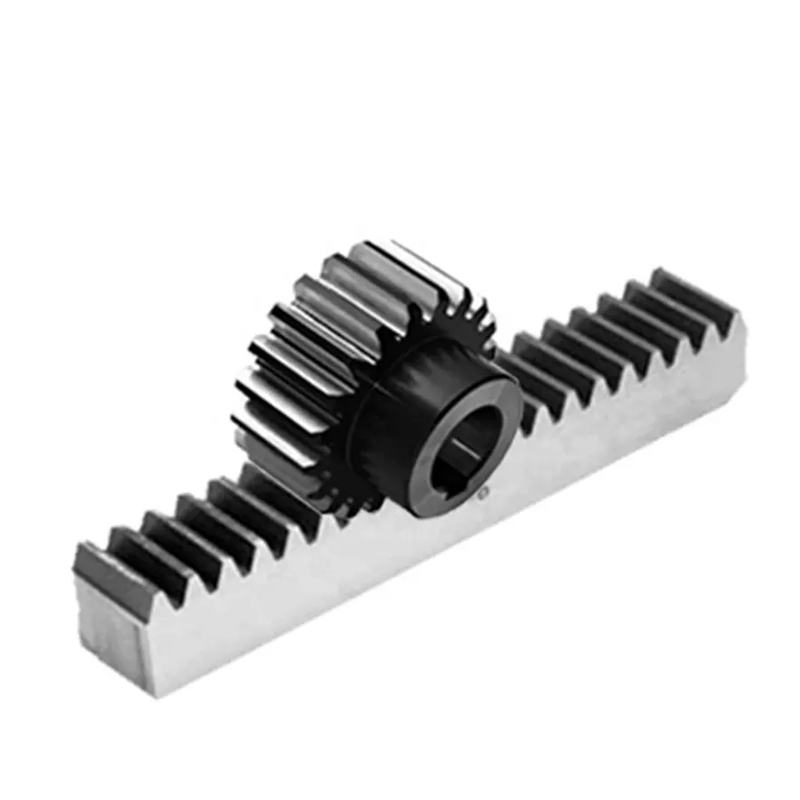No. 200 Gaoxin RD, Shanghua St, Lanxi, Zhejiang, P. R China
The multiple sizes high precision rack pinion gear system is an essent...
See Details
Gears and racks are fundamental components in mechanical systems, translating rotational motion into linear motion and vice versa. They are widely used in applications ranging from industrial machinery to automotive steering systems. A Gear and Rack Manufacturer designs these components to meet specific performance requirements, but whether they can handle high torque or load depends on several factors.
Material and Manufacturing Quality
The ability of gears and racks to withstand high torque begins with material selection. Steel, alloy, and hardened metals are common choices due to their strength and durability. A reputable Gear and Rack Manufacturer ensures that the materials are properly treated, such as through carburizing or heat treatment, to increase surface hardness and resistance to wear. Poor-quality materials or inadequate manufacturing processes can result in premature failure under heavy load conditions.
Design Considerations
The geometry and design of gears and racks also influence load capacity. Tooth profile, module size, and pitch determine how the load is distributed across the contact surfaces. Helical gears, for example, offer smoother engagement and can handle higher loads compared to straight-cut gears. Similarly, racks with reinforced teeth or larger face widths provide better support for high-torque applications. A Gear and Rack Manufacturer carefully calculates these design parameters to ensure that the components meet specific operational requirements.
Load Distribution and Alignment
Proper installation is critical to achieving the intended load capacity. Misalignment can cause uneven stress distribution, causeing to accelerated wear or tooth breakage. When a Gear and Rack Manufacturer provides detailed installation guidelines, it helps ensure that torque is applied evenly across the gear and rack surfaces. Lubrication is another important factor, as it reduces friction and heat generation, which can otherwise compromise the components' ability to handle heavy loads.
Testing and Quality Control
Before reaching end users, gears and racks typically undergo rigorous testing. Load tests, torque simulations, and fatigue analysis help verify that components can withstand expected operational conditions. A Gear and Rack Manufacturer may also use precision measurement tools to check tooth profiles, backlash, and alignment tolerances. Consistent testing and quality control ensure that the final products maintain their strength and reliability under stress.
Maintenance and Operational Limits
Even high-quality gears and racks have operational limits. Overloading, sudden impact, or inadequate lubrication can reduce service life. Regular maintenance, including inspection for wear, proper lubrication, and adjustment of alignment, helps maintain performance. A Gear and Rack Manufacturer often provides guidance on torque and load specifications, enabling engineers to design systems that operate safely within these limits.
Application Examples
In practice, gears and racks can handle substantial torque when designed and installed correctly. Industrial machinery, such as presses or CNC machines, often relies on robust gear and rack systems to move heavy loads accurately. Automotive steering racks are another example, where gears must transfer torque efficiently while maintaining smooth operation. These applications demonstrate that, with proper engineering and materials, gears and racks can meet demanding requirements.
Gears and racks are capable of handling high torque or heavy loads, provided that material quality, design, installation, and maintenance are carefully considered. A reliable Gear and Rack Manufacturer focuses on producing components with suitable materials, accurate tooth geometry, and thorough quality control. Understanding operational limits and following proper installation and maintenance practices ensures that these mechanical components deliver reliable performance in demanding applications.